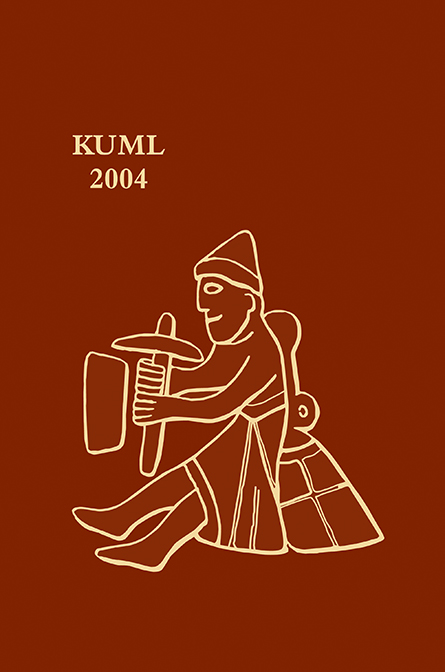Den skæggede eskimo
DOI:
https://doi.org/10.7146/kuml.v53i53.97502Keywords:
eskimoAbstract
The bearded EskimoLooking at old Inuit and North American Indian portraits one can see that the men very often have a full beard; these representations are in this respect factually inaccurate and also in conflict with the written texts from the Renaissance that describe these people as beardless. Based on actual examples, this article shows how this can be explained with reference to Renaissance anthropology: the beard showed what kind of humans those natives really were, which was far more important than showing exactly what they looked like in a mirror.
Martin Frobisher’s expeditions in search of the North West Passage brought him to Baffin Island, and his 1576-expedition was the first to bring back to England a native Inuit man. This attracted huge public and probably also royal interest, not least when the Inuit showed his hunting skills by catching ducks with a spear in a river. On his second expedition to Baffin Island in 1577, Frobisher brought back another man, a woman, and a baby. These Inuits were also put on show and attracted huge interest. All these Inuits died shortly after their arrival in England, but before they died portraits had been made of them, and these portraits circulated in Europe less than one year after they were made in England. Except for one portrait of an Inuit woman and her child from 1567, these were the first authentic portraits of Inuits in Europe.
Since European expansion into the wider world was still relatively new, it was important to make these portraits show what kind of humans these foreign people were. At one level, all the newly found people were the same and thus easy to categorise. They were all heathens, and Christian Renaissance Europe knew of two kinds of heathens, the people of Roman and Greek antiquity, and the savage or wild man frequently used as an emblematic figure. It was thus important to demonstrate this paganism, and the first portraits from 1567 and 1576 solved the problem in a very direct way, with writing on the portraits saying that this was a savage or pagan. On the 1576 portrait, made by the Dutchman Lucas de Heere in London, a text in French at the top explains this to be a “Sauvage” from the Northern countries. The three Inuits from the expedition in 1577 were drawn by John White among others, and in his portraits the Inuits were distinguished as heathen by arranging them in classical sculptural positions. However, when these portraits were copied in the Low Countries and in the German territories, this was not enough. Here they were sometimes supplied with a text explaining that these people were savages. But very often not even this was enough – perhaps because many people could not read – and so the savage or wild man was used as the model. In spite of the description of the Inuits as being nearly beardless, they were given a hirsute beard – just as had happened to the first portraits of the American Indians in the early 16th century when their savagery and paganism was to be communicated in engravings. In several different copies – made between 1578 and 1580 in the Low Countries and the German territories – of John White’s original and beardless portraits, the men had beards, whereas the woman remained the same as on the original portraits, as long as she was placed beside the man. However, in some cases, it was necessary to show the Inuit woman alone, and in these cases, she could not be depicted in the nude as Venus – as was done to show the paganism of the Indian women – because then she would not be recognised as an Inuit woman. Instead, she was given a club in her hand, the club known from the drawings of the wild men. In this way her savagery could also be represented in the illustrations.
This visual indication of savagery is the reason why people who had been in the Arctic and had met Inuits depicted them with a huge beard while at the same time presenting these pictures as lifelike portraits of the savages of the Arctic. This, for instance, was the case with the wooden figure which Andrew Barker, the captain and leader of the James Hall expedition to Greenland in 1612, placed in the kayak which he donated to Trinity House in Hull in 1613.
The article ends with a short description of the opposite situation in the Age of Enlightenment, when in Europe a huge beard became a symbol of masculinity, and when the beardlessness of the American Indians was discussed as an indication that the Indians, in the eyes of that age also, were considered to have failed to attain full development as men and as humans.
Ole Høiris
Center for Kulturforskning
Aarhus Universitet
Downloads
Published
2004-10-24
How to Cite
Høiris, O. (2004). Den skæggede eskimo. Kuml, 53(53), 275–308. https://doi.org/10.7146/kuml.v53i53.97502
Issue
Section
Articles
License
Fra og med årgang 2022 er artikler udgivet i Kuml med en licens fra Creative Commons (CC BY-NC-SA 4.0).
Alle tidligere årgange af tidsskriftet er ikke udgivet med en licens fra Creative Commons.


